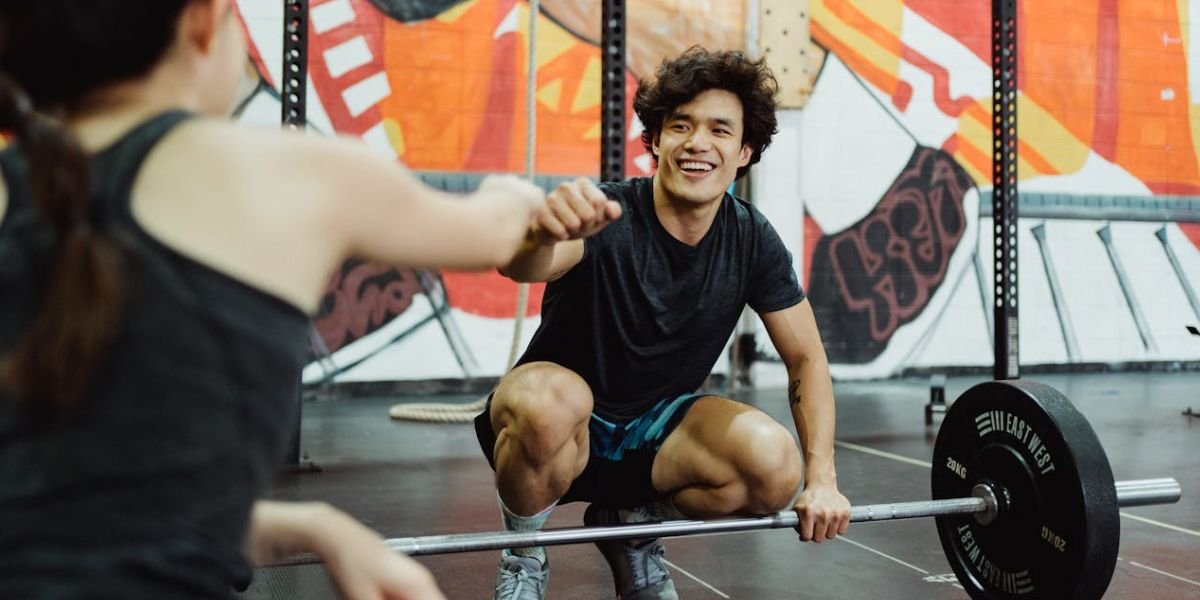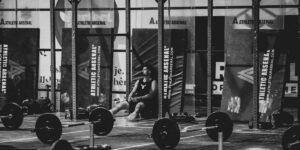Most fitness advice tells you what you should do, but never teaches you how to train for yourself.
Here you’ll learn how to train for lifelong fitness by building your own sustainable routine using the three core pillars: strength, cardio, and mobility.
We’ll cover the basics, the overlooked essentials, and find how to create a plan that actually fits your life, so you can stay strong, healthy, and moving well long term.
The best time to start is right now. Let’s get into it.
Table of Contents
Quick Disclaimer: This post is for general education, not medical advice. If you have an injury, illness, or condition, check with a doctor or physiotherapist before starting anything new.
Start With the Why

I know everyone says this, but it’s true, so before we get into the “how,” let’s cover the why, because without it, your training won’t last.
When life gets busy or motivation fades, your “why” is what keeps you going. It’s the anchor for your routine.
It’s not just Why are you going to train for lifelong fitness, but What are your fitness goals in general and the intention behind them?
Clarify Your Training Goals
Training without a goal is like going hiking without any direction; you’ll end up somewhere, but probably not where you wanted to be.
Here are a few simple examples of fitness goals:
- Get stronger, so you can do more in everyday life.
- Improve your cardio fitness for work, sport, or just feeling better
- Stay fit, mobile, and injury-free as you get older.
These are just examples. Your goals should fit your life.
For a deeper breakdown of how to set goals (and actually work long-term), check out: How To Find The Right Fitness Goals In 4 Simple Steps
The 10 components of fitness
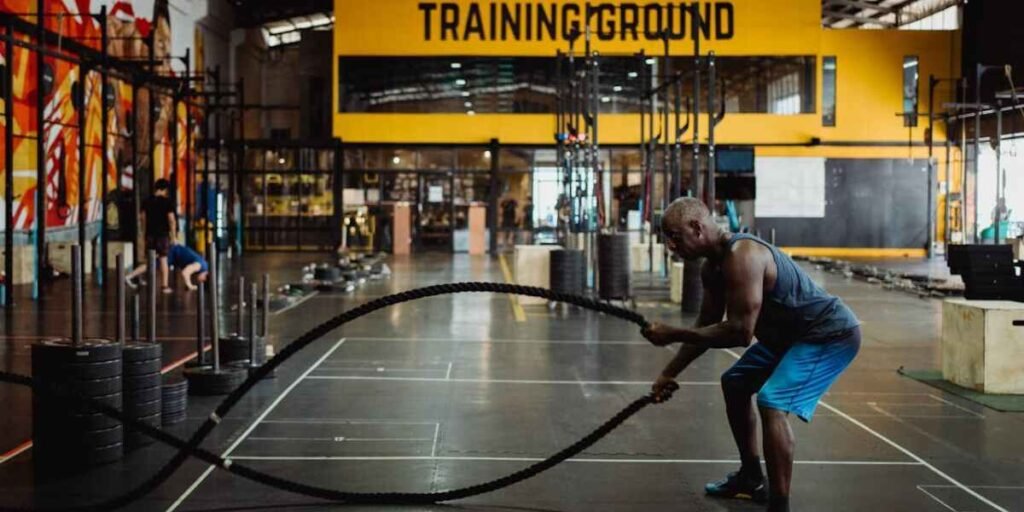
In “What Is Fitness?”, we identified the 10 components of fitness, which include the often overlooked essentials that build real fitness.
Here’s a quick refresher:
The Adaptable Ones (Train These):
- Cardiovascular Endurance – How well your heart and lungs fuel your body.
- Stamina – How long your muscles can keep going.
- Strength – How much force you can produce.
- Flexibility – Your range of motion.
- Power – How fast you can apply strength.
- Speed – How quickly you can move.
The Skill-Based Ones (Practice These):
- Coordination – How well you control movement.
- Agility – How fast you can change direction.
- Balance – Staying stable and controlled.
- Accuracy – How precisely you can move.
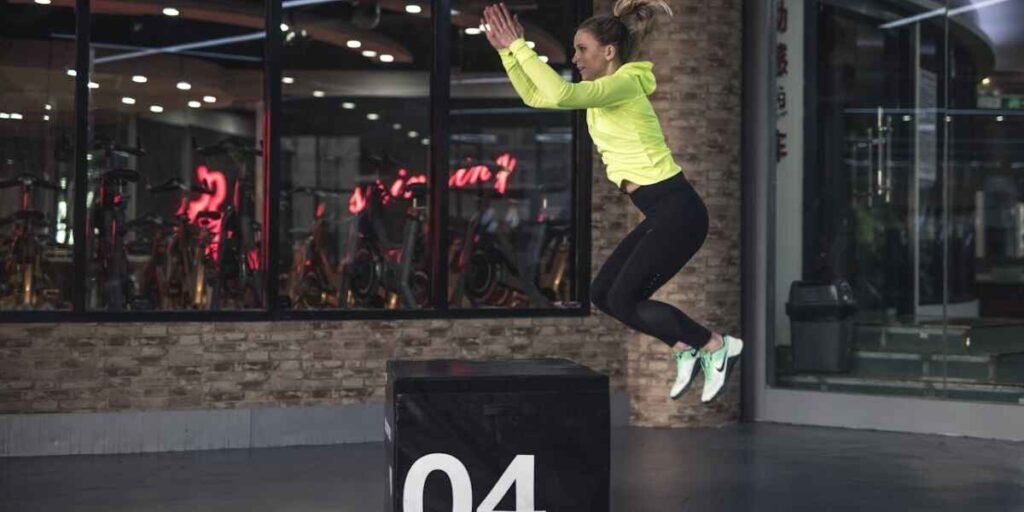
What to do with these? The how
To train for lifelong fitness, you need the 10 components, but they can be simplified into 3 core training pillars.
Focusing on these three is much more realistic and achievable for most people. Trying to tackle all 10 at once usually isn’t sustainable.
When done correctly, these three cover the most ground and can include all the components:
1. Cardiovascular Training

Examples:
Running, swimming, cycling, rowing, hiking, tennis, most sports, etc
Choose what you enjoy most.
What it does:
- Develops cardiovascular endurance by improving heart and lung capacity.
- Builds stamina, your muscles’ ability to sustain effort over time.
- Enhances speed and balance, especially on uneven or varied terrain.
- Improves coordination through repetitive, controlled movement patterns
- Cardio in general also has many other benefits for your long-term health and has been proven to reduce cardiovascular risk factors.
How to train it:
- Aim for 3 or more sessions per week, mixing different intensities to maximise benefits.
- Use both steady-state cardio (like a 30-45 minute jog or bike ride at a moderate pace) with high-intensity interval training (HIIT).
- HIIT involves short bursts of faster effort (e.g., sprinting for 20-30 seconds) followed by a recovery period of slower movement or short rest periods. Repeating a number of times.
- Start with what feels manageable and build up gradually to avoid burnout or injury.
- Consistency makes it lifelong. Choose activities you like so you stick with them over time.
Tip:
Tennis, or team sports, combine multiple fitness components at once, boosting efficiency and enjoyment. (They can lack structure for progressive overload but still work very well)
2. Strength Training
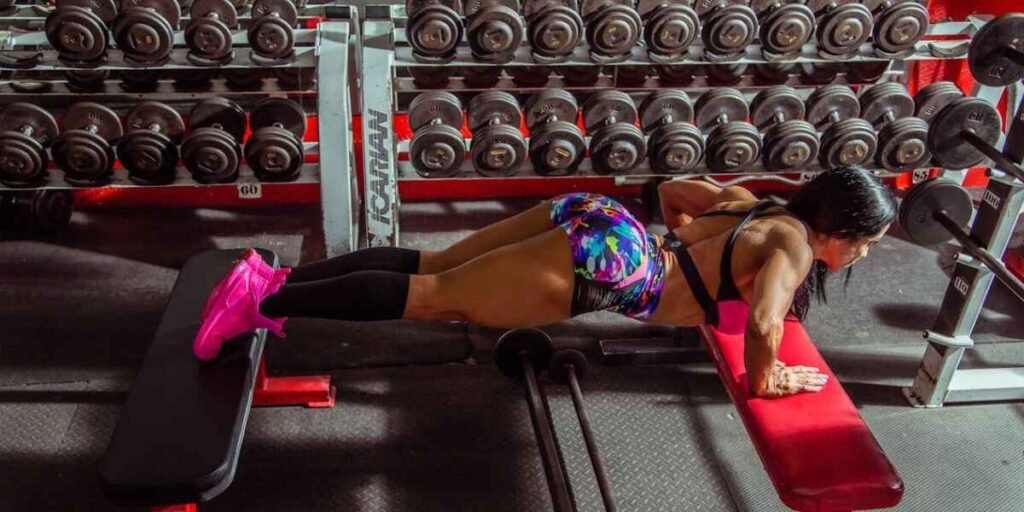
Examples:
Gym (resistance training), bodyweight exercises (callisthenics), hard yoga (power yoga or Ashtanga yoga), resistance bands.
Choose one that fits your lifestyle and preferences.
What it does:
- Builds muscular strength by increasing the force your muscles can produce.
- Develops power when performed explosively and coordination with how well you control that movement.
- Increases stamina when reps or sets are increased.
- Supports bone density and joint health. Studies also show that regular exercise, even into old age, helps preserve muscle strength and function, slowing the effects of ageing. (source)
- There are many other health benefits, and it can also increase mobility and flexibility through increased joint range of motion.
How to train it:
- Aim for 2-4 sessions per week, allowing rest days between heavy sessions to recover.
- Focus on compound movements (like squats, deadlifts, push-ups) that work multiple muscle groups at once.
- For strength, lift heavier weights with fewer reps (e.g., 3–6 reps per set).
- For power, perform lifts or movements explosively but with good control. Think of lifting or moving the weight as fast as safely possible.
- For stamina, use lighter weights and higher reps (e.g., 12–20 reps per set) or longer sets with shorter rest.
- Progressive overload to gradually increase the challenge over time by adding weight, reps, or sets to keep progressing.
Tip:
Don’t forget proper form and technique to prevent injuries.
3. Flexibility & Mobility
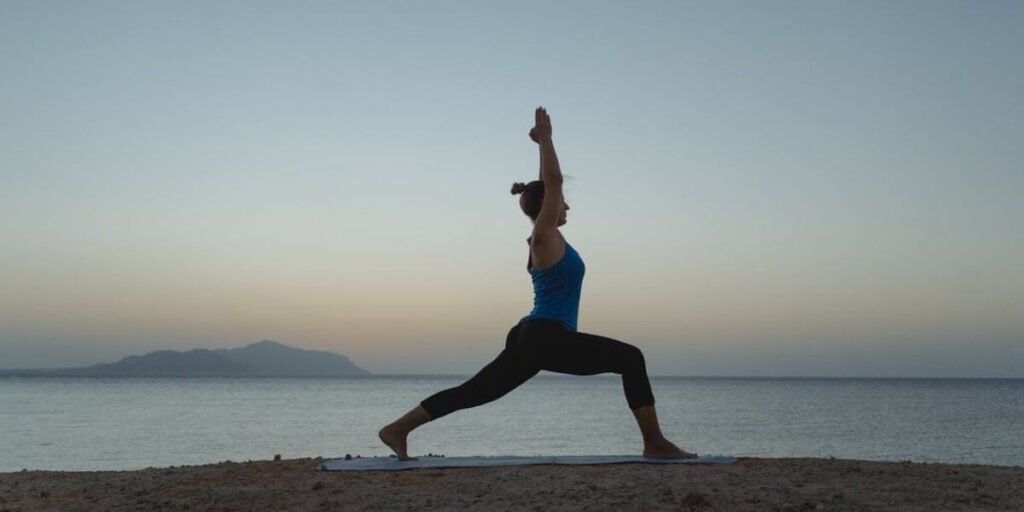
Examples:
Dynamic or static stretching, yoga (flow), Tai Chi, mobility drills, anything that helps you move better.
Choose the method you enjoy and can stay consistent with.
What it does :
- Improves flexibility (your range of motion).
- Supports balance and coordination by allowing smoother, more controlled movements. (especially with practices like Tai Chi)
- Helps prevent injuries by keeping muscles and joints mobile.
- Enhances accuracy in movement because your body can get into better positions with less restriction.
- Regular flexibility and mobility training not only improves range of motion but also movement efficiency, which can reduce injury risk and improve overall performance. (source)
How to train it:
- Aim for 5–15 minutes per day, or at least a few focused sessions per week.
- Combine static stretching (holding a stretch for 20–60 seconds) after workouts with dynamic mobility work (controlled joint movements) before workouts or as part of your daily routine.
- Focus on the areas where you’re the tightest or most limited. Common spots include hip flexors, shoulders, ankles, and spine.
- Use controlled mobility drills like hip openers, cat-cow stretches, or thoracic rotations to build better movement quality, not just flexibility.
- Think of it as “movement maintenance” You’re keeping your body in working order
Tip:
A flexible, mobile body reduces aches, helps you train longer, and makes everyday life easier.
Find Your Weak Links
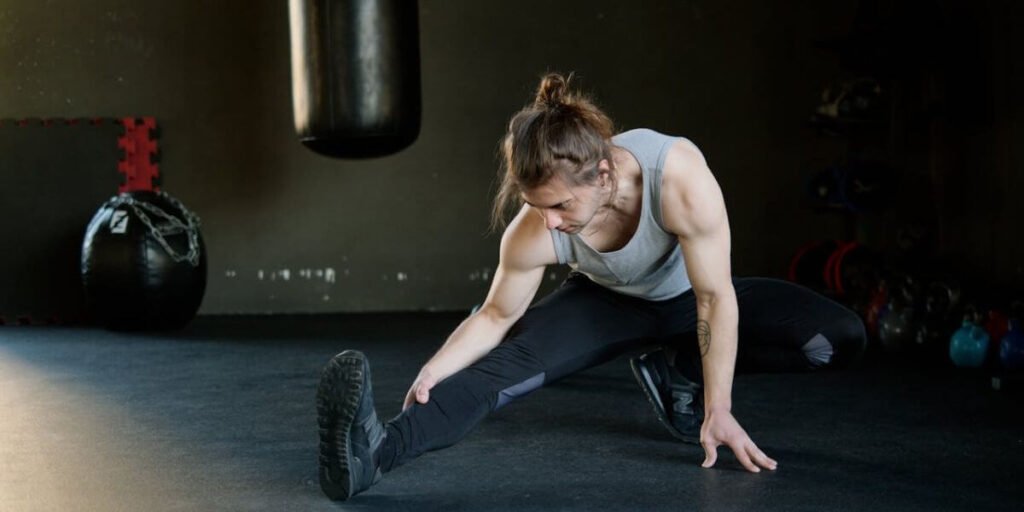
Start by adding the area you’ve neglected most.
That’s usually where the biggest improvements will come from.
If you consistently train the 3 Pillars: Strength, Cardio, and Mobility, you’ll be able to cover most of the 10 fitness components over time. But to make the most progress, focus on the weakest link first.
Ask yourself:
- Do you always skip cardio?
- Do you avoid strength training?
- Are you stiff, sore, or moving poorly because you never stretch or work on mobility?
- Are you training endurance and strength but ignoring balance, coordination, or agility?
Pick one weakness and work on it.
Once you’ve built the habit, you can add more over time.
Putting It All Together:

Once you’ve identified your weakest link, start building from there to fully train for lifelong fitness, as that involves training all three major components.
To highlight the importance of including all three, this study shows how strength training effectively reduces pain in critical areas, especially when combined with stretching and non-specific exercises (e.g. cycling or pilates) that support flexibility and endurance.
Here’s a simple aim for each:
| Training Type | How Often |
| Strength | 2-3 times per week. 30mins – 60mins per session. |
| Cardio / Endurance | 2-3 times per week. Total of 150 minutes per week of moderate-intensity or 75 minutes per week of vigorous activity. |
| Mobility / Flexibility | Daily or 3-4 times per week. 10mins a day or 20-30mins sessions. |
Example Week Plan:
Here’s what one week might look like with these three training types, but of course, it can vary widely.
This is set up with a time blocking method to break up your day into manageable chunks, and to keep a “workout” in the morning.
For whatever else you do during your day, whether that means a crazy day at work or a hard slog studying, often the best time to train is in the morning or afternoon.
Remember that 1 hour in the morning is worth 2 hours in the evening.
Example week :
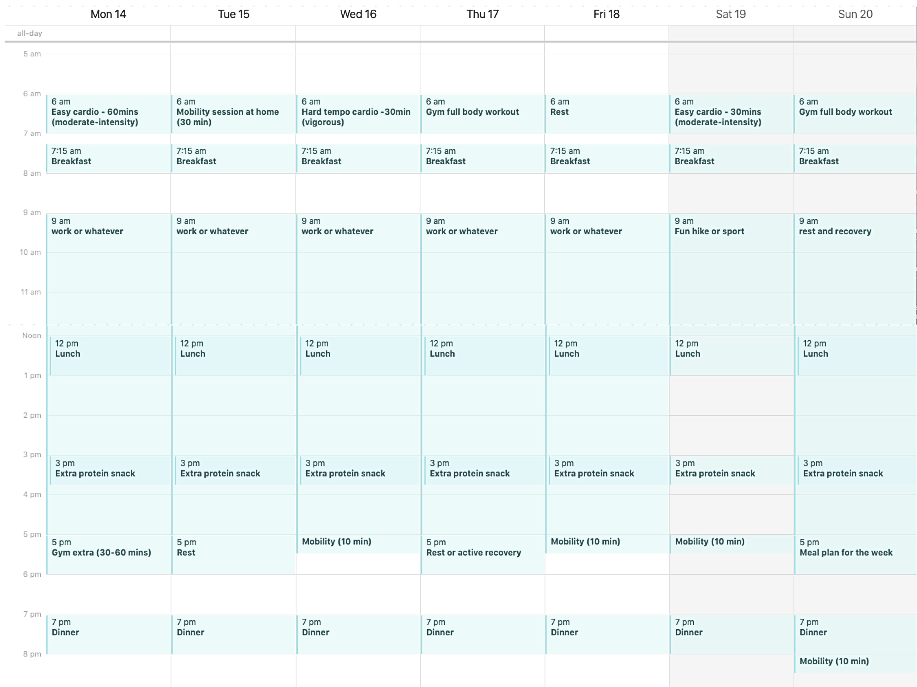
Key Points:
- Strength and cardio can be on the same day or split up; it’s up to you and how well you can manage fatigue.
- Mobility doesn’t need to be a full session. Even 5-10 minutes a day really adds up.
- Plan your meals and recovery too. Building a habit works best when sticking to a time “block”.
- Start with what you can do consistently, then build from there.
- Make time for the three pillars, then you can change around the intensity and movement type to include all the 10 components over time.
Tip:
Layer in the missing parts instead of trying to do everything at once.
Recovery Is Part of Training

Training is just one side of the coin. Recovery is where you actually get fitter and stronger.
If you skip it, you’ll stall progress or worse, burn out or get injured, and we have all been there. It’s not fun.
Make sure you’re including these:
- Rest days (not just lighter training)
- Good sleep
- Proper nutrition
- Active recovery when needed (walks, mobility, low-stress movement)
The rule of thumb is simple:
If you’re still wrecked going into your next workout, you probably need more recovery, not more training.
For the full breakdown, check out What Is Recovery in Fitness? Rest and Recovery Explained.
Summary:
At the end of the day, fitness is something you build for yourself, not something you just copy and paste.
You need to be able to enjoy what you’re doing if you want to keep it going long term, and sometimes that means you might need to focus on maintaining your fitness.
Focus on the 3 Pillars to train for lifelong fitness: strength, cardio, and mobility.
Stay consistent, change around the intensity and adjust when you need to.
That’s how you build real fitness that actually lasts.
Remember, it’s not about doing everything perfectly; it’s about doing enough, consistently, in a way that works for you.
There’s more to come, so follow Pioneer Gains on Facebook or Instagram for the latest posts and updates.
Have any questions or suggestions? Feel free to contact us here.
References:
- Georgescu, M., & Popescu, L. (2018). Strength Training and Health Benefits. Journal of Medicine and Life, 11(3), 227–232. Available at: https://pmc.ncbi.nlm.nih.gov/articles/PMC6172294/
- Pedersen, B. K. (2019). Physical activity and muscle–brain crosstalk. Nature Reviews Endocrinology, 15, 383–392. Available at: https://pmc.ncbi.nlm.nih.gov/articles/PMC6557987/
- Gordon, B. R., et al. (2021). Association of Efficacy of Resistance Exercise Training With Depressive Symptoms: Meta-analysis and Meta-regression Analysis of Randomized Clinical Trials. JAMA Psychiatry, 75(6), 566–576. Available at: https://pmc.ncbi.nlm.nih.gov/articles/PMC8294064/
- Garber, C. E., et al. (2011). American College of Sports Medicine position stand. Quantity and quality of exercise for developing and maintaining cardiorespiratory, musculoskeletal, and neuromotor fitness in apparently healthy adults. Medicine & Science in Sports & Exercise, 43(7), 1334–1359. Available at: https://pubmed.ncbi.nlm.nih.gov/24550352/
- Kubala, J. (2022). 7 Benefits of Strength Training, According to Experts. Healthline. Available at: https://www.healthline.com/health/fitness/benefits-of-strength-training#benefits
- Wang, X., et al. (2023). Resistance training and cardiometabolic health: An updated meta-analysis of randomized controlled trials. Journal of Sport and Health Science, 12(3), 345–355. Available at: https://www.sciencedirect.com/science/article/pii/S2095254623000571/
- Haskell, W. L., et al. (2007). Physical activity and public health: updated recommendation for adults from the American College of Sports Medicine and the American Heart Association. Medicine & Science in Sports & Exercise, 39(8), 1423–1434. Available at: https://pmc.ncbi.nlm.nih.gov/articles/PMC4273961/
Share this post with a mate:

